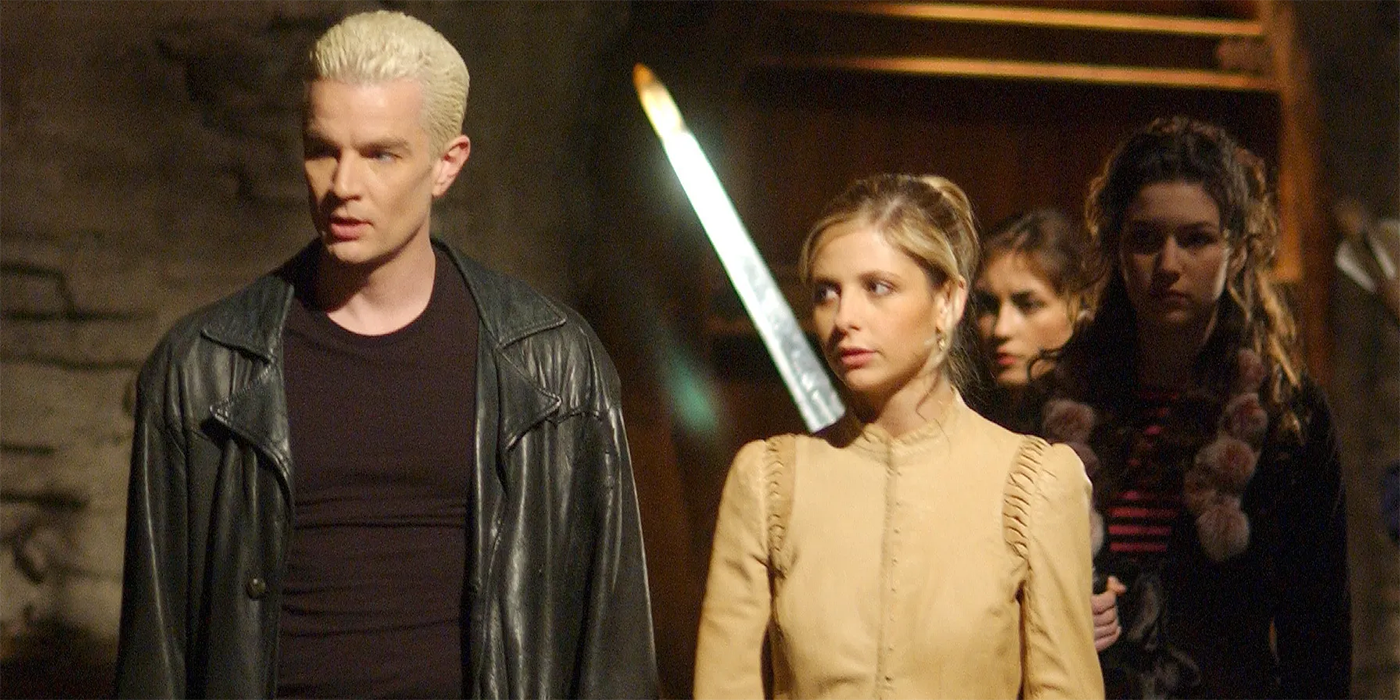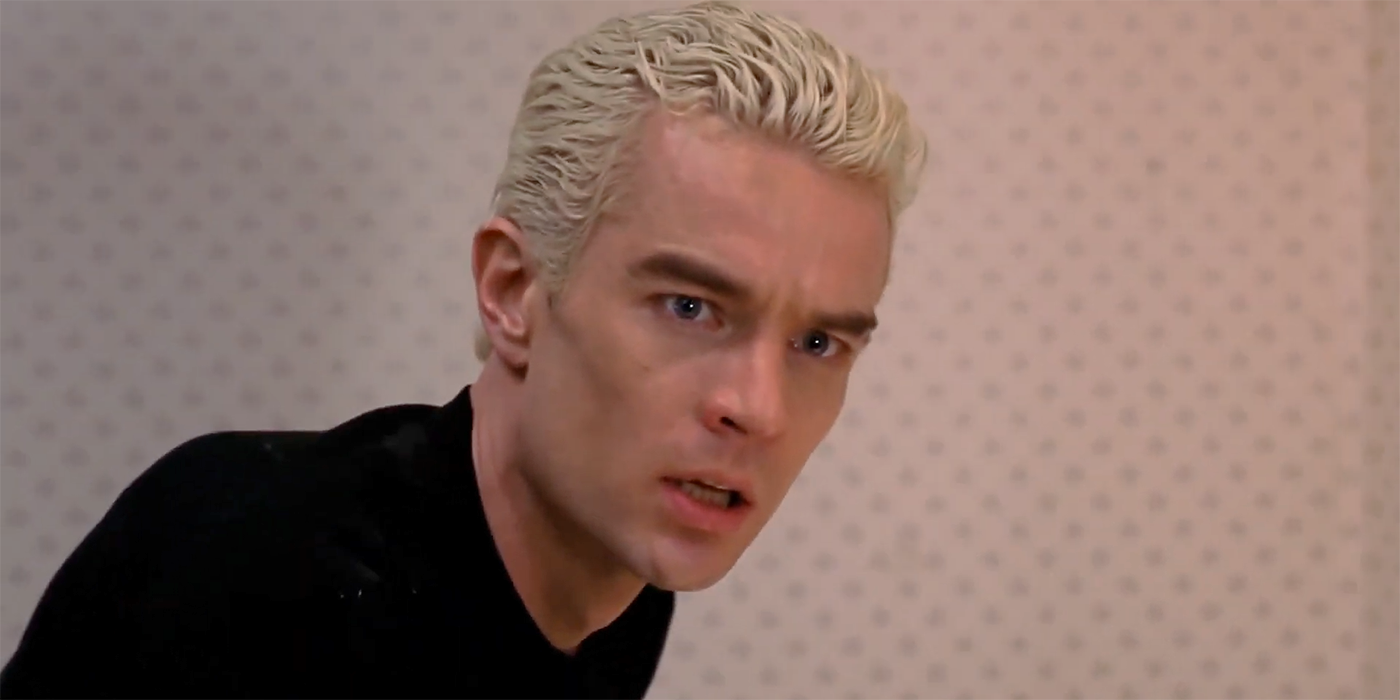Content Warning: the following article contains discussions of sexual violence.
Buffy the Vampire Slayer's James Marsters opens up about the intent and the filming of one of the show's most controversial scenes. Even in his earliest appearance as Spike, during the Buffy season 2 episode "School Hard", Spike shows an interest in the titular slayer played by Sarah Michelle Gellar. Thanks to Masters' layered performance, Spike became one of the teen drama's most popular supporting characters and eventually became a full-time cast member in season 4. As time went on, the relationship between Buffy and Spike developed into something extremely toxic.
The toxicity of the Buffy and Spike relationship reached an apex in Buffy's divisive season 6, culminating in the episode "Seeing Red", which includes a scene where Spike sexually assaults Buffy in the bathroom. During an interview with RadioTimes, to celebrate the 20th anniversary of the series finale, Marsters looked back on "Seeing Red". In the quote below, the actor talked about the origins of the controversial scene, its intent, and the emotional toll it took on him:
That was the crushing experience that she wanted to write about. I think that, because Buffy is a superhero and was fully capable of throwing Spike through a wall, they could flip the sexes. The point I was trying to make when I read that script was everyone who watches Buffy is Buffy, that’s the trick of storytelling…when I watch Buffy, I’m Buffy. And the people out there watching Buffy aren’t superheroes. So I’m gonna be doing this to them. You can’t flip the sexes on these characters and not have blowback, it’s going to have unintended consequences.
The other thing is that they were very frustrated because they couldn’t convince the audience to stop rooting for Spike, they did not want the audience to say, ‘Spike and Buffy forever,’ that’s just not what they were going for. They kept having me do worse and worse things trying to get people to realize.
Even Spike at one point goes, ‘Hey guys, I’m evil.’ Because the audience refused to do that, they finally landed on that scene. They kept having me do worse and worse things and finally they’re like, ‘OK, we’re just gonna have him do that to Buffy, like there’s nothing else that we have that’s going to make this point.’ That was another reason for that scene.
When you know those things, maybe it will inform how you react to that scene. I don’t know if it means it was the right thing to do. I know it doesn’t seem to age well but what I want people to know is it wasn’t a cavalier decision. It wasn’t just like, ‘Oh well, these things are OK and it might be sexy and spicy if we do this.’ That wasn’t what the writers were thinking at all.
It was very well considered and it was coming from a good place. It was the hardest day of my professional career, it sent me into therapy. I collapsed on set, I couldn’t even speak, I was shaking. That was a horrible day…when that script came, I was contracted to do anything that they said to anybody that they said to do it. I was legally compelled to do that scene. It wasn’t fun to watch probably, but it wasn’t fun to film either.
The Impact Of The Spike Scene On Buffy’s Legacy
Early on in Buffy, Spike's relationship with the lead slayer is one of the show's most compelling. Even though he's a vampire, Spike shows an incredible fondness not only for Buffy, but for her mother Joyce, and her sister Dawn. Even though that's partially the result of the chip in Spike's brain that stopped him from hurting humans, it does raise an interesting question of whether some vampires can be reformed which the series never fully addresses.
To critics of the Spike and Buffy relationship, which includes Marsters and Gellar, the "Seeing Red" scene exemplifies the worst of the pairing. And despite the initial attempts to clarify Spike's status as a villain because of what he'd done, it actually ends up serving as the basis for a redemption arc in Buffy season 7. Spike gets a soul, willingly subjecting himself to torture over guilt. Over the course of that last season, it becomes a question of whether Buffy is able to truly love Spike and forgive him.
The answer differs and continues to generate debate. In the same interview, Marsters said that Buffy can't truly love her former nemesis and that Spike understood that. Still, for other fans of Buffy the Vampire Slayer, the relationship and the storyline are worthwhile precisely for its difficulty, and the lack of easy answers is part of what makes it so compelling.
Source: RadioTimes

